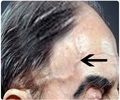A study revealed that the number of people with peripheral artery disease -- dangerously narrowed or clogged circulation in the legs -- rose by nearly a quarter in 10 years.

The rise is blamed on longer life expectancy, as peripheral artery disease occurs mainly among the elderly, but also on a sedentary lifestyle.
Peripheral artery disease is linked with a host of problems, including a nearly triple risk of heart attacks and strokes. Smoking, diabetes, high blood pressure and high cholesterol levels are associated with the disease.
The estimates, published online by the journal The Lancet, come from an overview of 34 published studies.
The investigation found that more than 140 million people are living with the disease in low- and middle-income countries, a rise by more than a quarter.
Of these, nearly 55 million live in Southeast Asia and 46 million in the western Pacific, a region that includes China and Japan.
Advertisement
"The dramatic growth... is already a major public health challenge, due to loss of mobility, diminished quality of life and the significantly increased risk of heart attack and stroke."
Source-AFP











